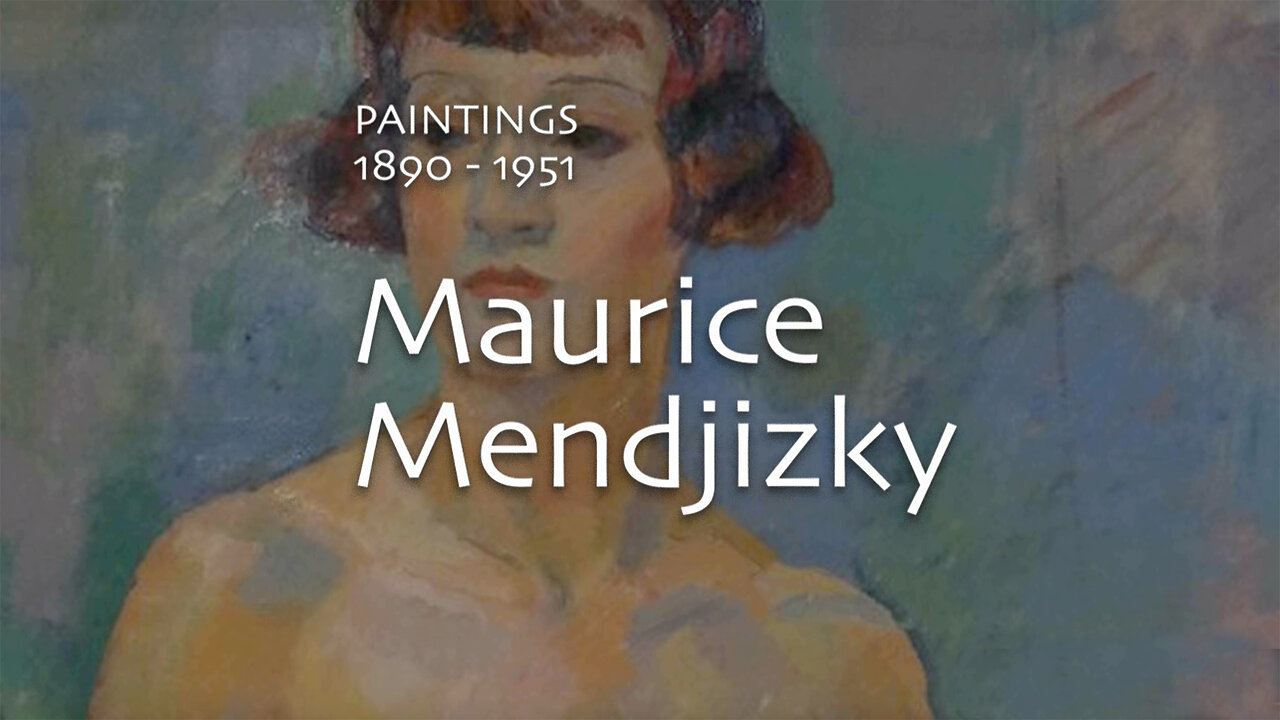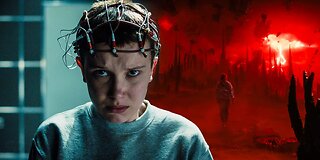Premium Only Content

Maurice Mendjizky - Paintings (1890 - 1952)
Maurice Mendjizky, French name of Maurycy Mędrzycki, born July 20, 1890 in Lodz (Poland) and died May 8, 1951 in Saint-Paul-de-Vence (Alpes-Maritimes), is a French painter of Polish origin.
A museum has been dedicated to him, the Mendjisky-Schools of Paris museum, created by his son, Serge Mendjisky. Opened in April 2014 in a former artist's studio built by Mallet Stevens in 1932 but closed in January 2017 for financial reasons, it was located at no. 15 square Vergennes in the 15th arrondissement of Paris. This museum was more widely devoted to the promotion of painters from the first (1912-1939) and the second School of Paris (1945-1960).
His father is a tinsmith. Very early, he is gifted for the artistic disciplines.
Initially passionate about music, he went to Berlin at an early age to study at a composition school. But, an excellent draftsman, he finally took an interest in painting and left for Paris. Between 1906 and 1907, he made a quick passage in the studio of Fernand Cormon at the School of Fine Arts in Paris.
He quickly left the workshop for a freer life where he worked a lot and was quickly noticed by the great merchants of the time. He exhibited at Georges Petit in 1912. The preface to the catalog is by André Salmon. These same years, he met Léopold Zborowski, one of the great art dealers of the time and became friends with Amedeo Modigliani, Pablo Picasso, Auguste Renoir.
Indeed, it was in 1913 that he met Renoir. The latter regularly invites him to his home in Collettes, in Cagnes-sur-Mer. Enthused by the light and the atmosphere of the Côte d'Azur, Maurice Mendjizky encourages his comrades, Modigliani, Chaïm Soutine, Léonard Foujita to join him. After a stay in Poland and Russia, he returned to Paris and met Alice Prin who would later become the model Kiki de Montparnasse. In love, they lived as a couple for three years until 1922.
In 1921, he took part in the first exhibition organized at the Café du Parnasse by Auguste Clergé and Serge Romoff. But after breaking up with Kiki, he leaves Paris for the South and takes refuge in work. He moved to Saint-Paul-de-Vence where he met his future wife Rose, with whom he would have two sons: Claude, born in 1924, who was assassinated by the Nazis fourteen days before the liberation, and Serge, born in 1929, more young resistance fighter from France. That same year, Léon Zamaron, police commissioner and great art lover, undertakes to buy 50% of his production from him. After several exhibitions at the Georges Petit gallery in Paris, Maximilien Gauthier organized an exhibition for him at the Kleiman gallery in 1933.
Painter revolted by the rise of fascism, he founded with Paul Signac, Paul Langevin and Frédéric Joliot-Curie, the Movement of Intellectuals for Peace. Engaged in the resistance, the Mendjizky family emerged bruised from the years of war: his wife was arrested in 1942, his eldest son executed, his entire family exterminated in Poland.
Inconsolable, ill, he devoted the last years of his life to painting and drawing the heroic resistance of the inhabitants of the Warsaw ghetto. Between 1947 and 1951, he devoted himself to the creation of his collection of drawings. 31 drawings will be published by him with an introduction to a poem by Paul Éluard. Picasso, after seeing the drawings of the Warsaw Ghetto will say: "It's a masterpiece, it's a real symphony of black and white"
-
![[XboxONE] GRINDING 1000g FC24](https://1a-1791.com/video/fwe1/01/s8/1/y/k/I/o/ykIoy.0kob-small-XboxONE-GRINDING-1000g-FC24.jpg) 3:29:15
3:29:15
deathbee
7 hours ago[XboxONE] GRINDING 1000g FC24
47K2 -
 1:08:32
1:08:32
Winston Marshall
1 day agoThe HIDDEN Agenda: Congresswoman Hageman UNCOVERS USAID Fraud, Censorship and Human Trafficking
82.8K103 -
 8:16
8:16
CarlCrusher
20 hours agoThe True Story of Stranger Things and the Montauk Project Origins
32.4K8 -
 10:05
10:05
ariellescarcella
22 hours agoNo, You're Not Having A 'Gender Crisis' You're Just Bored
45.1K27 -
 41:08
41:08
The Finance Hub
1 day ago $9.43 earnedBREAKING: DONALD TRUMP JR. SHOCKS THE WORLD!
34K80 -
 8:04
8:04
BIG NEM
1 day agoHow Your Mind SHAPES Reality! 🧠 Epigenetics, Psychedelics & Quantum Physics Explained!
42.5K4 -
 33:44
33:44
hickok45
10 hours agoSunday Shoot-a-Round # 270
33.5K19 -
 32:24
32:24
Degenerate Plays
1 day ago $1.04 earnedThe Floating Cuck Chair?! - Sonic The Hedgehog (Sonic Origins) : Part 1
30.4K2 -
 1:12:44
1:12:44
PMG
1 day ago $3.58 earnedSECRETS REVEALED!! What Really Happened To MLK And JFK??!!
25.4K9 -
 2:17
2:17
UnboxRemedy
7 days ago $0.41 earnedUNBOXING: The Monsters Classic Series (Ep.3)
16.8K2